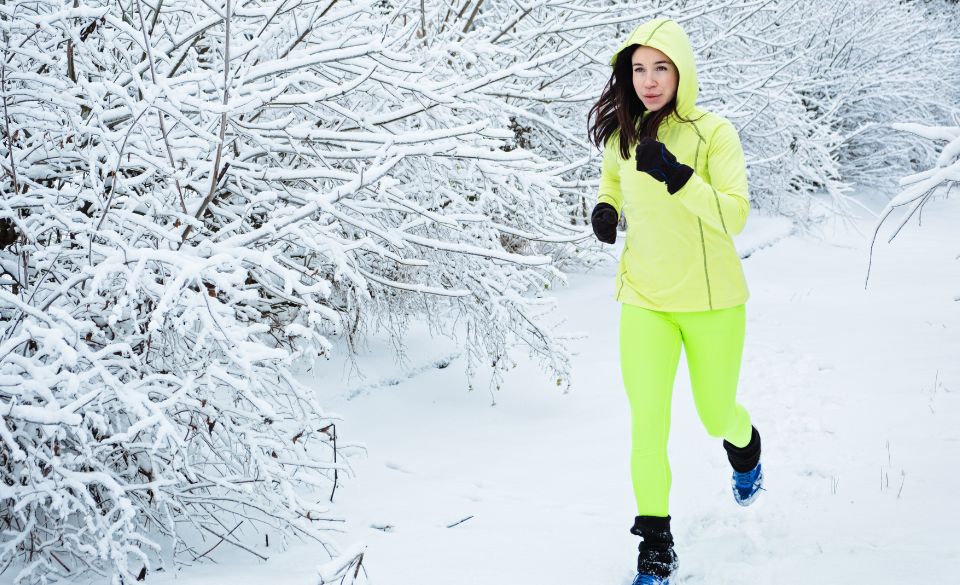
How to Avoid Hypothermia After Exercise: Stay Warm and Safe
Page Contents
- Layer Up: Dress Appropriately for Cold Weather
- Protect the Extremities: Cover Your Head, Hands, and Feet
- Warm-Up and Cool-Down Properly: Maintain Body Temperature
- Stay Hydrated: Don’t Forget to Drink
- Understanding Cold Weather Exercise Intensity
- Be Mindful of Wind Chill: Understand the Real Feel
- Stay Visible and Stay Safe: Dressing for Visibility
- Stay Informed and Stay Prepared: Check the Forecast
- Conclusion: Stay Warm, Stay Safe
Exercising outdoors in cold weather can be invigorating and refreshing, but it also poses the risk of hypothermia if proper precautions aren’t taken. Hypothermia occurs when your body loses heat faster than it can produce, leading to a dangerous drop in body temperature. To ensure your safety and well-being during chilly workouts, it’s crucial to know how to avoid hypothermia after exercise. In this article, we’ll discuss practical tips backed by research to help you stay warm and avoid the risks of hypothermia.
Layer Up: Dress Appropriately for Cold Weather
The key to staying warm during cold-weather exercise is proper clothing. Layering your clothing provides insulation and allows you to adjust your attire as needed. The layering system typically consists of three layers:
1. Base Layer: The base layer should be moisture-wicking and breathable. It helps regulate body temperature by keeping moisture away from the skin. Look for materials like merino wool or synthetic fabrics designed for active wear.
2.Insulation Layer: The insulation layer provides warmth by trapping air close to the body. Choose insulating materials like fleece or down jackets that provide excellent thermal properties.
3.Outer Layer: The outer layer serves as protection against wind, rain, and snow. Opt for a waterproof and wind-resistant jacket or shell to shield you from the elements.
A study published in the Journal of Strength and Conditioning Research emphasizes the importance of proper clothing in preventing hypothermia during exercise. The researchers recommend wearing multiple layers and removing outer layers when necessary to prevent overheating.
Protect the Extremities: Cover Your Head, Hands, and Feet
When it’s cold, blood tends to flow away from the extremities, making them more vulnerable to frostbite and contributing to heat loss. To prevent this, it’s essential to protect your head, hands, and feet.
Wearing a hat or beanie helps retain heat and prevents significant heat loss through the head. Research published in the Journal of Applied Physiology indicates that covering the head significantly reduces overall heat loss, as it’s an area with a high surface area-to-volume ratio.
Invest in gloves or mittens designed for cold weather to keep your hands warm and insulated. Additionally, wearing moisture-wicking socks and appropriate footwear with good insulation can help prevent heat loss from your feet.
Warm-Up and Cool-Down Properly: Maintain Body Temperature
Proper warm-up and cool-down routines are crucial for maintaining body temperature during exercise. A warm-up gradually raises your body temperature and prepares your muscles for physical activity. By increasing blood flow to your muscles, warm-up exercises help prevent rapid heat loss during exercise.
Similarly, a cool-down routine is essential to gradually decrease your body temperature after a workout. Cooling down can be as simple as slowing down your exercise intensity and incorporating stretching exercises. This gradual transition helps prevent a sudden drop in body temperature, reducing the risk of hypothermia.
A study published in the British Journal of Sports Medicine highlights the importance of incorporating a proper warm-up and cool-down to prevent injuries and maintain body temperature during exercise.
Stay Hydrated: Don’t Forget to Drink
It’s easy to overlook hydration during cold weather workouts, but staying properly hydrated is just as important in chilly conditions as it is in warm ones. Even though you might not feel as thirsty as you would in hot weather, your body still loses fluids through sweat and respiration.
Research published in the Journal of Athletic Training suggests that cold weather exercise can increase fluid loss due to the body working harder to maintain core temperature. Therefore, it’s crucial to drink water or hydrating fluids before, during, and after your workout to prevent dehydration and help regulate your body temperature.
Remember that hydration doesn’t only apply to warm-weather workouts. By staying hydrated, you support your body’s thermoregulation process, which is essential for avoiding hypothermia.
Understanding Cold Weather Exercise Intensity
In addition to taking steps to prevent hypothermia, it’s important to understand the impact of cold weather on exercise intensity. The cold temperatures can affect your body’s ability to perform at its peak, and adjusting your workout intensity accordingly can help you avoid fatigue and injury.
Cold weather can cause vasoconstriction, the narrowing of blood vessels, which reduces blood flow to the working muscles. This can lead to decreased oxygen delivery and muscle fatigue. Therefore, it’s essential to be mindful of your exercise intensity in cold weather and make adjustments as needed.
Research published in the Journal of Sports Medicine and Physical Fitness suggests that individuals may experience higher rates of perceived exertion during cold weather workouts, even at the same exercise intensity. This means that the exercise may feel more challenging than it would in warmer conditions, which can lead to increased fatigue.
Consider modifying your workout routine by focusing on shorter, high-intensity bursts rather than prolonged endurance exercises. This can help minimize the potential negative impact of cold weather on your performance while still providing an effective workout. Additionally, listen to your body and be prepared to decrease intensity or take breaks if you start to feel excessively fatigued.
Be Mindful of Wind Chill: Understand the Real Feel
When exercising in cold weather, it’s not just the air temperature that matters; wind chill can significantly affect how your body perceives and responds to the cold. Wind chill is the combined effect of air temperature and wind speed, and it can make the temperature feel much colder than it actually is.
The National Weather Service provides wind chill charts that indicate the “real feel” temperature based on the combination of air temperature and wind speed. It’s important to check the wind chill before heading out for your workout and take appropriate precautions to stay warm and safe.
Keep in mind that wind chill can increase the risk of frostbite and hypothermia. Exposed skin is particularly vulnerable, so make sure to cover up exposed areas and wear appropriate protective gear, such as a face mask or neck gaiter, to shield yourself from the wind.
Stay Visible and Stay Safe: Dressing for Visibility
In addition to protecting yourself from the cold, it’s important to prioritize visibility when exercising outdoors in winter. Shorter daylight hours and potentially adverse weather conditions can make it challenging for motorists and other individuals to see you.
Wearing reflective clothing or accessories and choosing brightly colored attire can significantly improve your visibility. This is especially important if you’re running or cycling near roads or in low-light conditions. Reflective vests, armbands, and shoes with reflective elements are great options to enhance your visibility and reduce the risk of accidents.
Consider adding a headlamp or attaching a small light to your clothing or gear if you’re exercising in low-light or dark conditions. These additional measures can make a big difference in keeping you safe and visible during your cold weather workouts.
Stay Informed and Stay Prepared: Check the Forecast
Before venturing out for your cold weather workout, take the time to check the weather forecast. Keep an eye on temperature, wind chill, precipitation, and any other relevant factors that may impact your safety and comfort.
If conditions are extreme or potentially dangerous, it’s important to prioritize your well-being and consider alternative indoor exercise options. Severe cold, blizzard conditions, or icy surfaces can significantly increase the risk of hypothermia, frostbite, or accidents. It’s always better to err on the side of caution and choose safety over pushing through adverse conditions.
By staying informed and prepared, you can make informed decisions about whether to proceed with your outdoor workout or opt for an indoor alternative. Remember, your health and safety should always be the top priority.
Conclusion: Stay Warm, Stay Safe
Exercising in cold weather can be enjoyable and invigorating, but it’s crucial to take precautions to avoid hypothermia. By dressing appropriately in layers, protecting your extremities, maintaining a proper warm-up and cool-down routine, and staying hydrated, you can ensure your safety and well-being during cold-weather workouts.
Always pay attention to weather conditions and listen to your body’s cues. If you start shivering uncontrollably, experience dizziness, confusion, or extreme fatigue, it’s crucial to seek shelter, warm up, and seek medical assistance if necessary.
So, gear up, layer up, and keep these tips in mind to enjoy your cold-weather exercise while staying warm and safe. Don’t let the chill hold you back from pursuing your fitness goals. Stay active, stay warm, and have a great workout!




